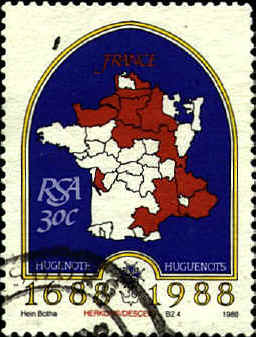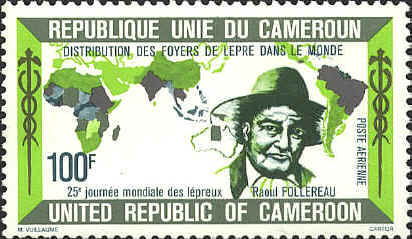|
Religion
Soon
after the Protestant Reformation began in Germany it spread to France.
The first Protestant martyr in France, Jean Vallière, was burned at
the stake in August of 1523 in Paris. John Calvin prefaced his
Institutes of the Christian Religion with a letter to King Francis
I seeking toleration for the reformers.
The first non-Catholic congregation in French
territory, was Lutheran, organized in 1546 in Meaux. A Huguenot
church was founded in Paris about 1555 in spite of persecution. The
first Protestant synod was summoned in 1559. A confession of faith
drawn up by the deputies was strongly influenced by Calvin's ideas. In
general, French Protestants were Reformed rather than Lutheran.
The St. Bartholomew's Day massacre, August 24-25, 1572,
brought about the death of nearly all the leading Huguenots in Paris,
and led to the deaths of thousands of Protestants throughout France.
in 1589 Henry IV, a Protestant, took the throne. In 1593 he converted
to Catholicism, and in 1598 promulgated the Edict of Nantes, which
provided for the religious and political freedom of the Huguenots.

Continued conflict culminated in the Peace of Alès of
1629 which withdrew the political freedom of the Huguenots while it
continued to guarantee their freedom of conscience. These remaining
rights eroded during the next decades, and on October 18, 1685 the
Edict of Nantes was formally revoked by Louis IV. Over the next
several years more than 400,000 Huguenots left France, emigrating to
England, Ireland, Scotland, Prussia, the Netherlands, North and South
America, Australia, and Canada. The father of Paul Revere, Boston
silversmith and patriot, Apollos Rivoire, was a Huguenot.
The stamp shows the area of Huguenot influence,
probably at its greatest extent. The red areas are those controlled by
the Roman Catholic Alliance. It was issued to mark the 300th
anniversary of the settlement of Huguenots on the Cape of Africa in
1688.

Disease
Raoul
Follereu was born in 1903. In 1920 he published his first book, The
Book of Love. He was a journalist and during one of his trips to
Africa he became aware of the problems faced by people with leprosy
(Hansen's disease). During 1950s and 1960s he organized conferences
and raised funds for the treatment and rehabilitation of people with
leprosy.
The stamp was issued in 1978 to mark the twenty-fifth
World Leprosy Day. It shows a map of the southern hemisphere with the
areas where leprosy is endemic colored in various colors to indicate
the prominence of the disease,
The color code below is based on a 2002 map and is only
approximate when applied to this map:
Dark blue indicates the
highest prevalence, 5 to 15 per 10,000 people
Dark gray, 3-5 per 10,000
Light gray, 1-3 per
10,000
In addition Light blue
and light and dark green are used.
Dr. Enzo Venza, president of the Italian Association
for Leprosy (AIFO) said that "every day 2,000 people in the world find
out that they are lepers.

Language
Although Finnish is the official language of the country, other
languages are spoken by parts of the population, including a dialect
of Swedish, several dialects of Sami or Lappish, Estonian, Romani, and
Karelian. in 1976 a stamp showing a map of the various language areas
was issued to commemorate the centenary of the Finnish Language
Society. Unfortunately, there is no key available for the map. Swedish
is indicated by the white areas along the western and southern coasts
and the island of Aaland; the white area at the top of the map
indicates Saami dialects. Since over 94% of the population speak
Finnish most of the map must indicate various Finnish dialects.


 |
